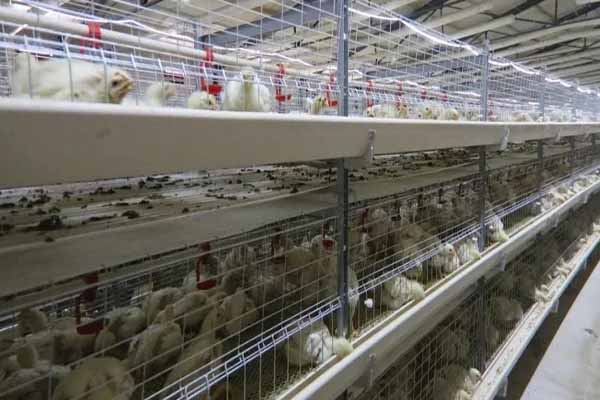Poultry Farm Startup Guide in South Africa
Time : 2025-07-01
Starting a poultry farm in South Africa can be a lucrative venture, provided you have the right knowledge and resources. This comprehensive guide will walk you through the essential steps to establish a successful poultry farm in South Africa, from choosing the right location to investing in professional poultry farming equipment.
1. Market Research and Business Plan
Before diving into the poultry farming business, it’s crucial to conduct thorough market research and develop a comprehensive business plan.
1.1 Market Research
Understand the market demand for poultry products in your area. Consider the following factors:
- Local consumer preferences
- Competition analysis
- Availability of feed and raw materials
- Pricing strategies of competitors
1.2 Business Plan
Your business plan should include:
- Executive Summary: Overview of your business and its objectives.
- Company Description: Detailed description of your poultry farm, including the type of poultry you plan to raise.
- Market Analysis: Market research findings and how your farm will meet the demand.
- Organization and Management: Information about your team and their roles.
- Marketing and Sales Strategy: How you plan to market your poultry products and reach your target audience.
- Financial Projections: Detailed financial forecasts, including startup costs, operating expenses, revenue, and profit projections.
2. Choosing the Right Location
The location of your poultry farm is crucial for its success. Consider the following factors when selecting a site:

2.1 Accessibility
Your farm should be easily accessible to suppliers and customers. A good location will save on transportation costs and ensure timely delivery of feed and poultry products.
2.2 Climate
The climate should be suitable for raising the type of poultry you’ve chosen. In South Africa, different regions have varying climate conditions, so research the climate of your chosen location.
2.3 Proximity to Suppliers
Being close to suppliers will help reduce feed costs and ensure a steady supply of quality inputs.
2.4 Water Supply
A reliable and clean water supply is essential for poultry farming. Ensure your location has access to sufficient water for your farm’s needs.
3. Poultry Species and Breeds
Selecting the right poultry species and breeds is vital for your farm’s success. Consider the following factors:
3.1 Market Demand
Choose a species and breed that are in demand in your local market.
3.2 Growth Rate
Consider the growth rate of the breed you choose. Some breeds grow faster than others, which can impact your farm’s productivity.
3.3 Disease Resistance
Choose breeds that are resistant to common poultry diseases to minimize health risks and reduce costs associated with disease treatment.
4. Farm Design and Infrastructure
A well-designed farm layout can enhance productivity and minimize disease risks.
4.1 Housing Design
Your poultry houses should be designed to provide adequate space for the birds, ensure proper ventilation, and facilitate easy cleaning and maintenance.
4.2 Equipment and Systems
Invest in high-quality poultry farming equipment, such as feeders, waterers, and egg collection systems. Ensure the equipment is suitable for your chosen poultry species and breed.
4.3 Biosecurity Measures
Implement biosecurity measures to prevent the spread of diseases. This may include regular cleaning and disinfection of the farm, limiting access to the farm, and implementing vaccination programs.
5. Feed and Nutrition
Proper nutrition is essential for healthy and productive poultry. Consider the following aspects:
5.1 Feed Quality
Use high-quality, balanced feed to ensure your poultry receive all the necessary nutrients for growth and health.
5.2 Feed Ingredients
Choose feed ingredients that are suitable for your chosen poultry species and breed.
5.3 Feed Storage an d Handling
d Handling
Store feed in a clean, dry, and rodent-proof area to prevent spoilage and contamination.
6. Farm Management and Training
Effective farm management is essential for the success of your poultry farm.
6.1 Staff Training
Train your staff on poultry husbandry, biosecurity, and other critical aspects of farm management.
6.2 Monitoring and Record-Keeping
Regularly monitor the health and performance of your poultry. Keep detailed records of key farm activities, such as feed consumption, egg production, and disease outbreaks.
7. Marketing and Sales
Develop a strong marketing and sales strategy to promote your poultry products and increase your farm’s revenue.
7.1 Branding
Develop a strong brand identity for your poultry products to stand out in the market.
7.2 Distribution Channels
Identify and utilize effective distribution channels to reach your target market.
7.4 Sales and Promotion
Implement sales and promotional activities to increase the visibility and demand for your poultry products.
8. Financial Management
Sound financial management is crucial for the sustainability of your poultry farm.

8.1 Budgeting
Prepare a detailed budget to track your farm’s expenses and revenue.
8.2 Financing Options
Explore financing options to fund your poultry farm startup, including loans, grants, and investors.
8.3 Cost Management
Implement cost-saving measures to optimize your farm’s operational efficiency.
9. Conclusion
Starting a poultry farm in South Africa requires careful planning, research, and investment. By following this guide, you can establish a successful poultry farm that meets the demand for high-quality poultry products.
Remember to stay informed about the latest trends and technologies in poultry farming to maintain a competitive edge.











